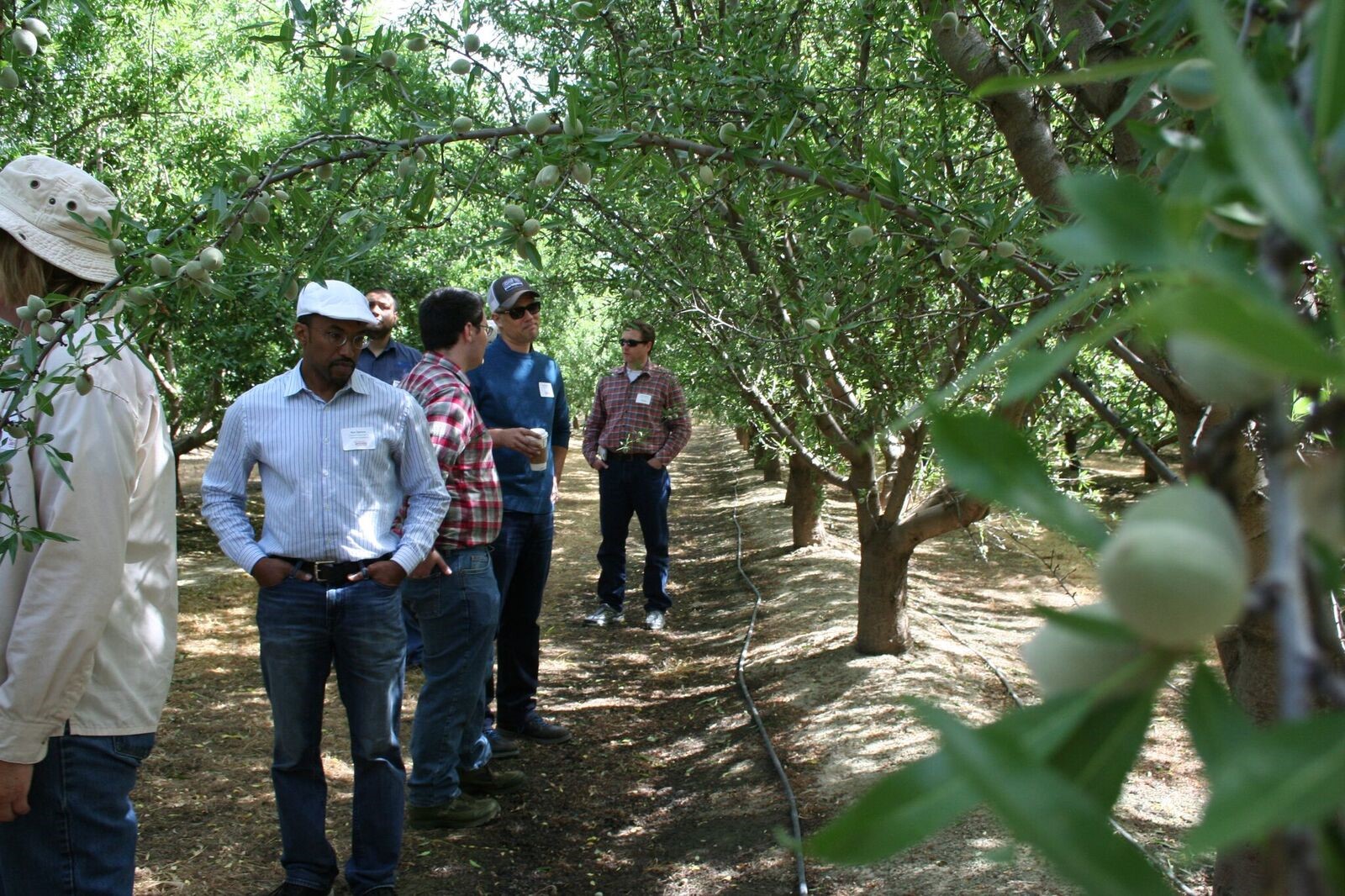“Having a good working relationship with regulators requires taking the time to invite them out to your ranch and having them learn about how you farm.” This was the key statement from Bill Lyons of Mape’s Ranch in Modesto during his welcoming remarks at the Almond Board of California’s 15th annual Environmental Stewardship Tour on May 11. For Lyons, building relationships with state and federal regulatory agencies who oversee water, air and pesticide regulations impacting California almonds is not as difficult as it might seem at first — but it does require communication. 
A former secretary of the California Department of Food and Agriculture (CDFA), Lyons and his son Billy hosted more than 40 people at their ranch to offer valuable insights into almond production. During the tour, attendees walked beneath the almond trees while learning about the various factors involved in planting a new orchard, including soil variety, selection of rootstock and how to make decisions about the type of irrigation system to be installed.
Those in attendance represented the following agencies and educational organizations: State Water Resources Control Board; USDA Natural Resources Conservation Service (NRCS); CDFA; San Joaquin Valley Air Pollution Control District, California Department of Pesticide Regulation (DPR); Central Valley Regional Water Quality Control Board; USA EPA Region 9; and UC Davis Land, Air, Water Resources.
Brian Leahy, director of the California DPR, explained the tour always attracts a large contingent of DPR workers because it allows them the opportunity to see first-hand the complexity of almond production practices and related decision making.
Patrick Pulupa, the recently appointed Central Valley Water Board executive officer, praised the Almond Board for its efforts in hosting the tour and offering his staff the opportunity to get out of the office and observe how almond growers deal with water issues. He also said he enjoyed an in-orchard presentation by Dr. Thomas Harder, a Cooperative Extension specialist and professor at UC Davis, on university studies related to nitrogen use.
The Almond Board’s Gabriele Ludwig, director, Sustainability and Environmental Affairs, noted the annual environmental stewardship tour has multiple benefits.
“The tour is a great opportunity for environmental regulators,” said Ludwig. “They see almond growing in-person, hear about what almond growers have to consider as they make management decisions and learn about grower-funded research and outreach activities by the Almond Board that help growers navigate the many production and regulatory issues they face.”

Clinton Bowman of Salida Ag Chemical emphasized the importance of monitoring orchards in order to make pest management decisions. Walking through an orchard on a regular basis is just as important as utilizing the latest technology, he noted.
A decade of dust research — funded by the Almond Board, partnerships with equipment manufacturers and USDA NRCS — resulted in methods, resources and incentives to help reduce harvest dust and keep dust created inside the orchard, away from neighbors. As a result of this research and a greater understanding of how dust is generated during almond harvest, many equipment manufacturers have made changes to sweepers and pickup machines to reduce dust emissions. Attendees were able to view these changes as they saw the latest in smart technologies for sprayers, shakers and sweepers designed to reduce dust.
Another high point of interest was an experimental 10-acre almond orchard that was planted using the Independence variety on dwarf rootstock at a rate of 900 trees per acre at a 12-by-4-foot spacing. Billy Lyons pointed out that the test project’s goal is to develop an orchard that can produce comparable yields as a conventional orchard while decreasing production costs and farming in an environmentally friendly manner. Use of a modified olive harvester (which catches the almonds) eliminates sweeping and picking up the almonds. This helps address air quality concerns by decreasing dust during harvest, he said. However, “the jury is still out on [the] test plot,” said Billy, “and we have a long way to go before we can make any definitive conclusions about how this might work in the real world, but it’s important to show regulators that our industry is being progressive and pro-active in addressing these concerns. Change takes time.”